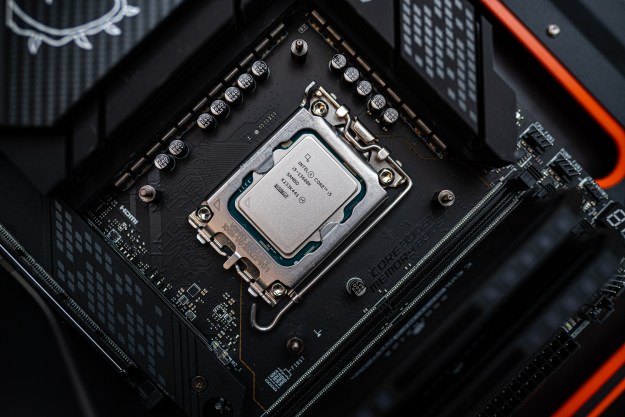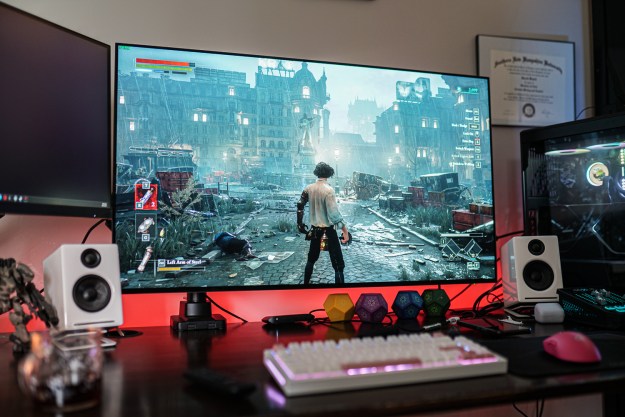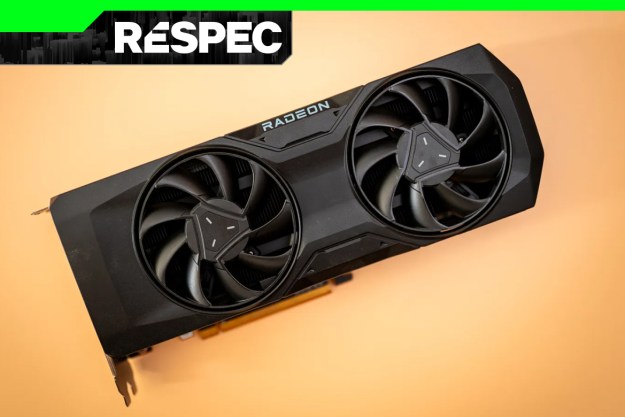There are a lot of options when you’re on the hunt for the best graphics card. In years past, you could look at a product name and get a general sense of where it landed in terms of performance, but times are changing. With bizarre value propositions, extra features that go beyond raw performance, and questionable naming conventions, GPUs are a lot more complex than they used to be.
I’ve reviewed every graphics card released over the last two years, covering two generations from both AMD and Nvidia, as well as Intel’s first push into the discrete graphics market. Here are the only GPUs I’d even consider buying.
What to look for

Before getting to the recommendations, here’s a high-level overview of what to look for in a graphics card, as well as how much weight you should put behind each of the criteria. Here’s how it breaks down:
- Raw performance — 50%
- Ray tracing performance — 15%
- Extra features (DLSS, Nvidia Broadcast) — 20%
- VRAM capacity — 10%
- Efficiency — 5%
These numbers aren’t concrete, but they’re a good starting point for how you should evaluate a GPU. If you need Nvidia’s Deep Learning Super Sampling (DLSS), for example, then that already limits your options. Similarly, if you don’t care about ray tracing, raw performance becomes more valuable. And while efficiency generally doesn’t move the needle in the U.S., but it can save you some money on your power bill in other countries.
Outside of the graphics card itself, the other thing to keep in mind is your monitor’s resolution. This will largely dictate what graphics cards you should even be considering, regardless of your budget. You might have $1,200 to drop on an RTX 4080, but you really shouldn’t if you’re using a 1080p monitor. It’s tempting, but you could actually limit the performance of your GPU in a situation like this due to a CPU bottleneck.
Around $1,000 — Nvidia RTX 4080
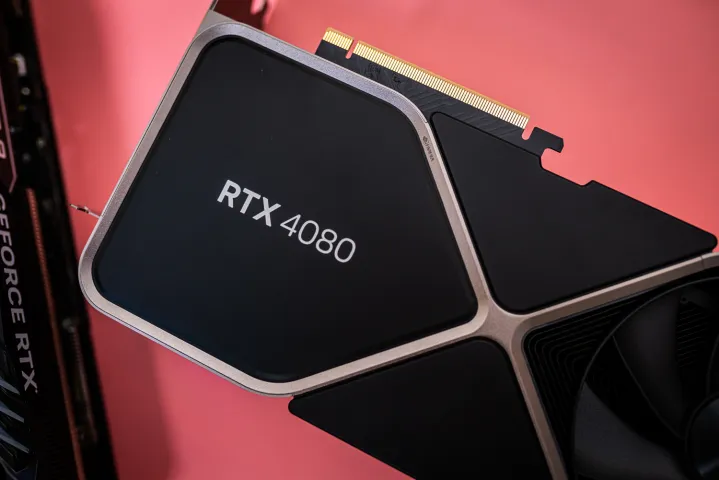
If you’re spending $1,000 on a graphics card, you want a premier 4K gaming experience. That includes excellent ray tracing, next-gen features like AI frame generation, and the ability to max out your settings without any compromises. And for as problematic as the RTX 4080 is, it delivers that experience.
The RTX 4080’s main issue is its list price of $1,200, but you can find it now for around $1,100, and if you’re lucky, maybe even $1,000. That makes it much more attractive. At native 4K, you can easily surpass 60 frames per second (fps) in the most demanding games, with some titles, such as Forza Horizon 5, reaching above 100 fps.
Raw performance is impressive, but the RTX 4080 really earns its stripes with ray tracing and DLSS 3. Its closest competitor, AMD’s RX 7900 XTX, offers a better value when it comes to raw performance and pricing, with that card available for around $900 right now. However, it takes a clear back seat in ray tracing, and it doesn’t offer the performance-multiplying DLSS 3, which make it hard to recommend when you’re dropping $1,000 on a GPU.
Around $600 — AMD RX 6950 XT

We were disappointed with AMD’s RX 6950 XT when it released, but now that prices have come down, it’s one hell of a GPU. You can find it in stock for around $600, and it’s a steal at that price. In terms of raw performance, you’re looking at 4K gaming easily above 60 fps, generally matching Nvidia’s $800 RTX 4070 Ti for a fraction of the price.
The caveat, as is usually the case with AMD graphics cards, is relatively low ray tracing performance. Given the price of the RX 6950 XT now, however, the compromises in ray tracing are easy to accept. At native 4K, the RX 6950 XT nearly matches Nvidia’s option at this price point — the RTX 4070 — and it shoots ahead when you turn ray tracing off.
At $600, you want a GPU that can blaze through 4K games, even if you have to make a few compromises elsewhere. For instance, games like Portal RTX and Cyberpunk 2077‘s path tracing mode will struggle on the card without access to a feature like DLSS 3. If you look at the broader picture of games, though, it’s clear to see that the RX 6950 XT is the GPU to buy if you have $600 to spend.
Around $300 — AMD RX 6700 XT
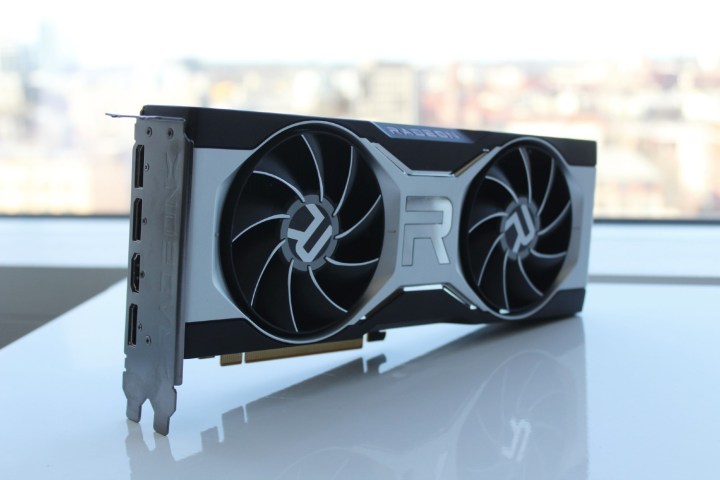
If you don’t keep up with all of the latest GPU reviews, you missed the absolute bloodbath that has marked the last few months of releases from AMD and Nvidia. Both companies have failed to deliver a compelling option around $300 for budget-minded gamers. Thankfully, last-gen’s RX 6700 XT perfectly fills the gap now that its price has come down.
You can find the RX 6700 XT for around $330, and it’s a bargain at that price. At $300, you’re looking for a GPU that delivers a premier 1080p gaming experience, with enough grunt to push up to 1440p with a few compromises, and the RX 6700 XT delivers on both fronts. It offers above 60 fps at 1440p in the vast majority of games, even with maxed-out settings. It can even maintain that performance in less-demanding ray tracing titles like Resident Evil 4.
The card takes a back seat to Nvidia alternatives in the most demanding ray tracing workloads, but it’s hard to ignore how much performance the RX 6700 XT offers for around $300. Even better, it comes strapped with 12GB of VRAM. Recent releases, such as Resident Evil 4 and The Last of Us Part 1, have pushed past the 8GB capacity traditionally found on GPUs around this price. The RX 6700 XT is better equipped to handle these games. For instance, the RX 6700 XT is not only faster than Nvidia’s $300 RTX 4060 in The Last of Us Part 1, but it also outpaces even the $400 RTX 4060 Ti.
Around $200 — Intel Arc A750

Finally, we have the Intel Arc A750 at around $200. Although Intel’s graphics cards have quietly become excellent, I wouldn’t normally recommend them. Intel is still new here, its software still has strange bugs, and though many of the kinks have been worked out, it’s hard investing in a brand with such a short track record.
But for $200, you’re definitely not getting anything better from AMD or Nvidia. The Arc A750 is about as fast as the RTX 3060 overall, and that’s when you account for ray tracing performance. Take ray tracing out of the mix, which is fair for a $200 graphics card, and the Arc A750 actually has a slightly lead. And the Arc A750 is anywhere from $50 to $100 cheaper than the RTX 3060.
At this price, you’re limited to 1080p, but the Arc A750 offers an excellent experience at that resolution. It can push ray tracing in games like Resident Evil 4 and Returnal while staying above 60 fps (and that’s before image reconstruction with FSR or XeSS). In games like Horizon Zero Dawn and Assassin’s Creed Valhalla, it can even reach above 100 fps with maxed-out settings.
The Arc A750 fills in a gap in the market that AMD and Nvidia have largely ignored. Your other options at that price are the RX 6600 and RTX 3050, both of which are leagues slower than the Arc A750.
Graphics cards to avoid

I’m not going to pretend the four GPUs above cover the range for everyone. There’s a reason we have so many options, and even in recommending these four, I’ve pointed to alternatives. For instance, I don’t think the AMD RX 7900 XTX or Nvidia RTX 4070 are the best options at their respective prices, but you can make a compelling argument for them. There are some GPUs you should straight-up avoid, though.
First, there’s the RTX 4060 Ti. This graphics card is woefully underpowered at its list price of $400, so much so that we didn’t even give it a scored review. It’s sometimes beaten by last-gen’s RTX 3060 Ti, and its limited memory configuration means it has a lot of problems with modern, demanding titles.
The RTX 4070 Ti has similar issues. It’s fast, for sure, but it’s also insanely overpriced. Sure, it comes with DLSS 3 and it can offer 60 fps at 4K, but it’s also slower than AMD’s RX 6950 XT while costing around $200 more.
This isn’t to throw shade at Nvidia alone, though. AMD’s RX 7900 XT has problems, as well. Its price has come down since launch, but so has the price of the RX 7900 XTX. It’s still only about $100 cheaper and it’s somewhere around 10% slower. It’s a bad value, plain and simple, and the RX 7900 XTX is a much better pick.
Editors' Recommendations
- I’ve used Intel CPUs for years. Here’s why I’m finally switching to AMD
- Don’t buy the RTX 3060 in 2024
- 4 CPUs you should buy instead of the AMD Ryzen 7 5800X3D
- Don’t buy a cheap GPU in 2024
- 5 GPUs you should buy instead of the RTX 4070



